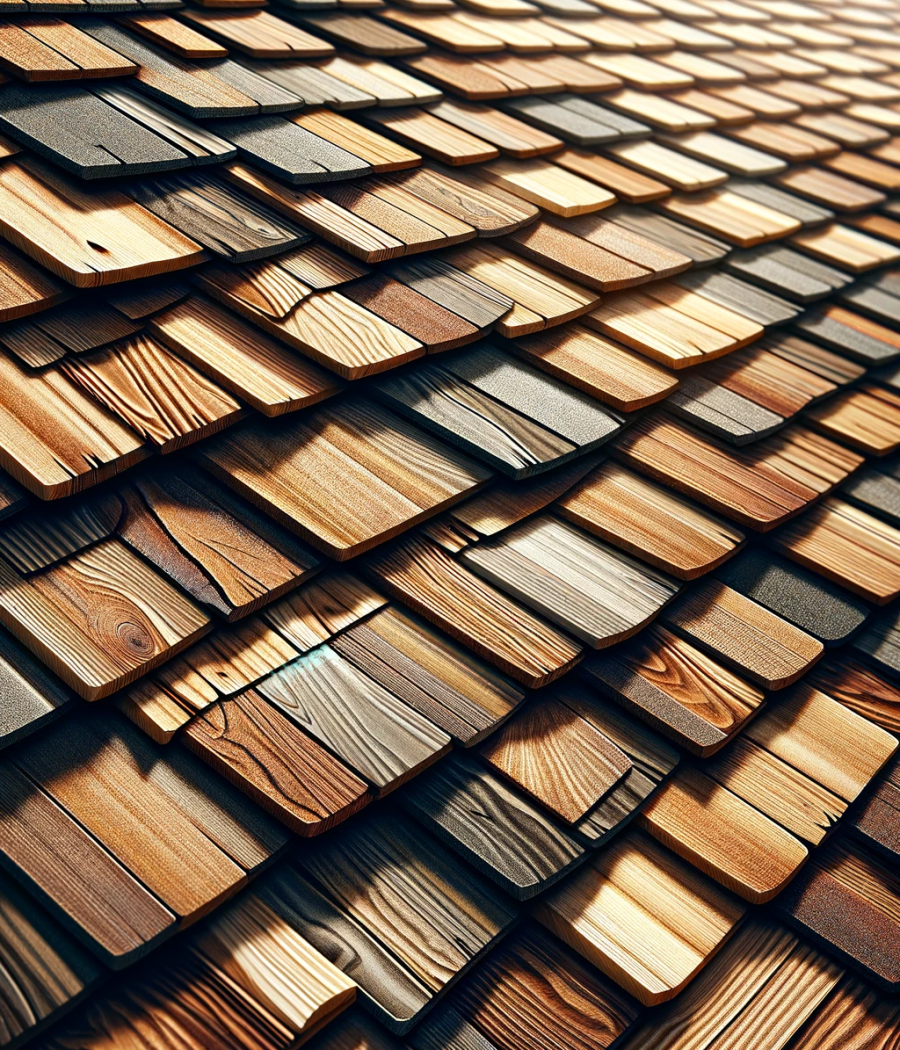Roofing Materials
- Home
- Information
Types of Roofing Materials for Homes and ADUs | Compare Cost, Style & Durability
Asphalt Shingles
Asphalt shingles are highly favored as a residential roofing option in North America, owing to their durability and low maintenance requirements. These shingles come in a variety of colors and styles, making them a popular choice among homeowners and building professionals alike. Additionally, they are cost-effective and can last for decades.
There are three main types of asphalt shingles: strip shingles, dimensional shingles, and luxury shingles. All three types offer excellent waterproofing protection for the entire building structure, repelling water, snow, and ice.
They are installed in an overlapping pattern to ensure maximum protection. The shingles are laid in courses from the bottom up, with the first course known as the starter course and the last course as the ridge course or ridge slates. A ridge cap, piece, roll, or ridge vent material is used to cover the ridge.
Overall, asphalt shingles are a reliable and practical roofing solution for any home or building.
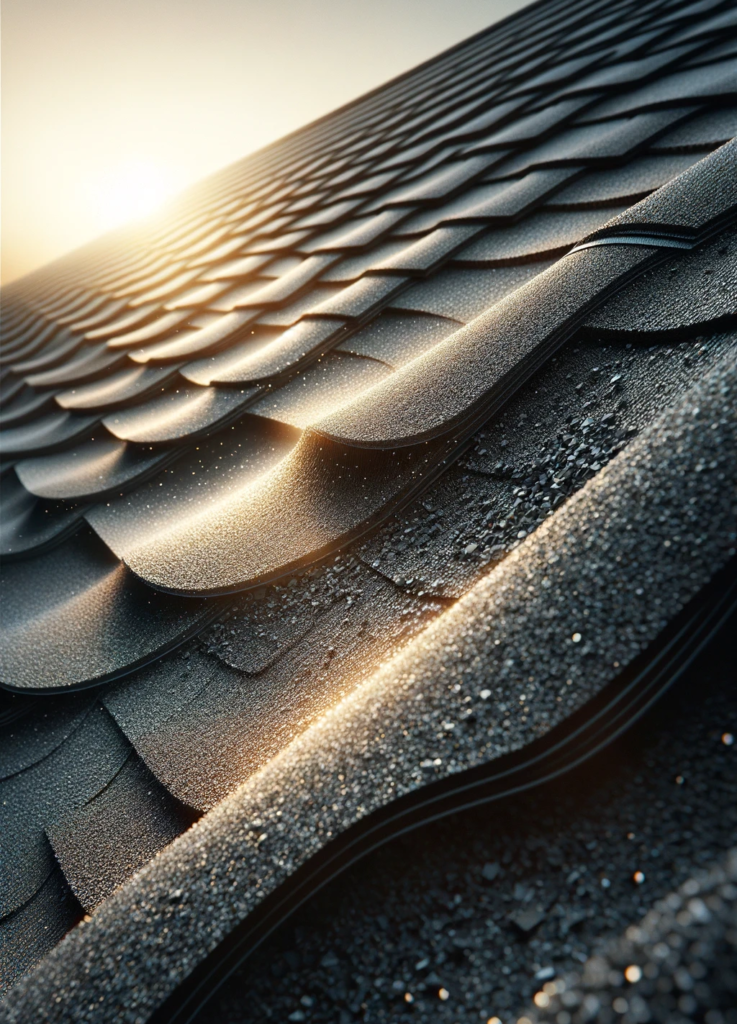
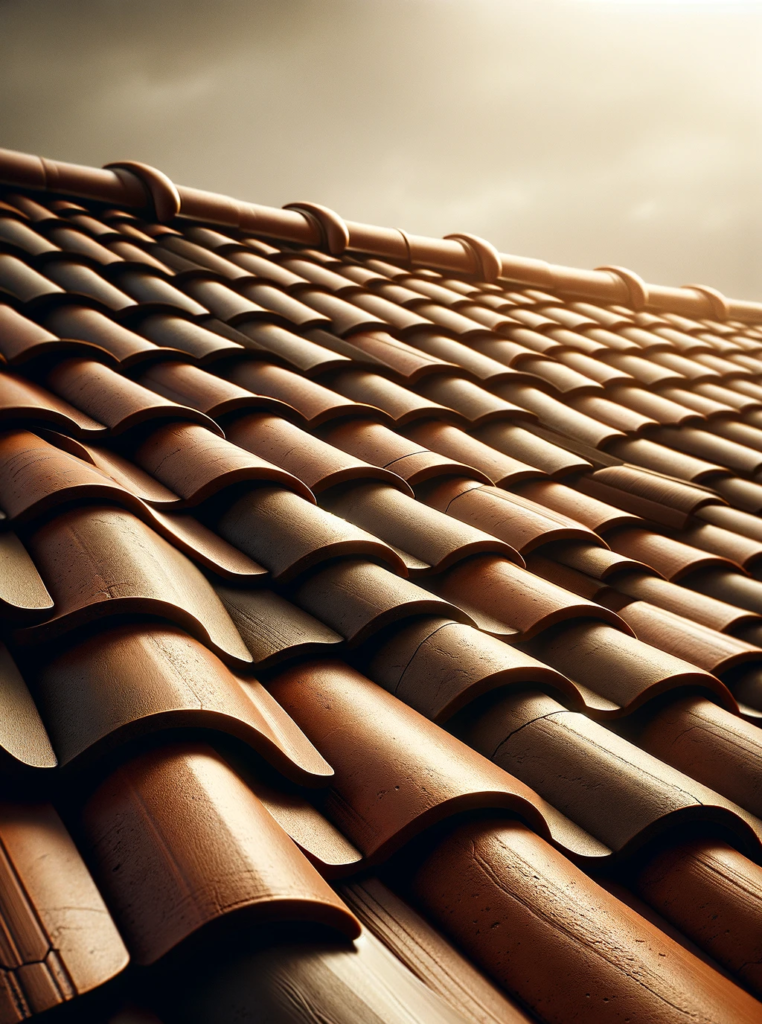
Clay Tile
Clay tile is a type of roofing material that has been used for centuries. Made from natural clay that is shaped into tiles and fired in a kiln to create a hard, durable material, clay tile is popular in many regions of the world, particularly in areas with warm, dry climates, and is known for its durability, beauty, and energy efficiency.
One of the primary benefits of clay tile roofing is its durability. Clay tiles are resistant to fire, wind, and rain and can last up to 100 years or more with proper maintenance. They are also resistant to rot and insect damage, which can be a concern with other types of roofing materials. In addition to their durability, clay tiles are also known for their beauty. They are available in a wide range of colors and styles, including traditional curved or flat tiles, and can be used to create a variety of architectural styles, from Spanish Colonial to
Mediterranean. Clay tiles also weather well over time, developing a beautiful patina that enhances their appearance. While clay tile roofing has many benefits, it does have some drawbacks to consider. One of the primary concerns is the weight of the tiles. Clay tiles can be quite heavy and require a strong support structure to hold them in place. This can increase the cost of installation, particularly if the support structure needs to be reinforced. Additionally, clay tiles can be fragile and may be prone to cracking or breaking if not installed properly or if exposed to extreme weather conditions, such as hail or heavy winds. This can be a concern in areas with frequent storms or harsh weather conditions.
Overall, clay tile roofing is a durable, beautiful, and
energy-efficient option for homeowners who are looking for a long-lasting and attractive roofing material.
Concrete Tile
Concrete tiles are made from a mixture of cement, sand, and water. They are formed into tiles and cured in a kiln to create a hard, durable material that can be used for roofing.
The primary benefit of concrete tile roofing is its durability. Concrete tiles are resistant to fire, wind, and rain and can last up to 50 years or more with proper maintenance. Concrete tiles are also available in a wide range of colors and styles, making them a versatile option for homeowners who are looking for a specific aesthetic. Concrete tiles can be particularly beneficial in warm, sunny climates, where energy costs can be high. Another benefit of concrete tile roofing is its cost-effectiveness. While concrete tile roofing has many benefits, it does have some drawbacks to consider. Concrete tiles can be quite heavy and require a strong support structure to hold them in place. This can increase the cost of installation, particularly if the support structure needs to be reinforced. Additionally, concrete tiles can be prone to cracking or breaking if exposed to extreme weather conditions, such as hail or heavy winds. This can be a concern in areas with frequent storms or harsh weather conditions.
Overall, concrete tile roofing is a durable, versatile, and cost-effective option for homeowners who are looking for a long-lasting and attractive roofing material.
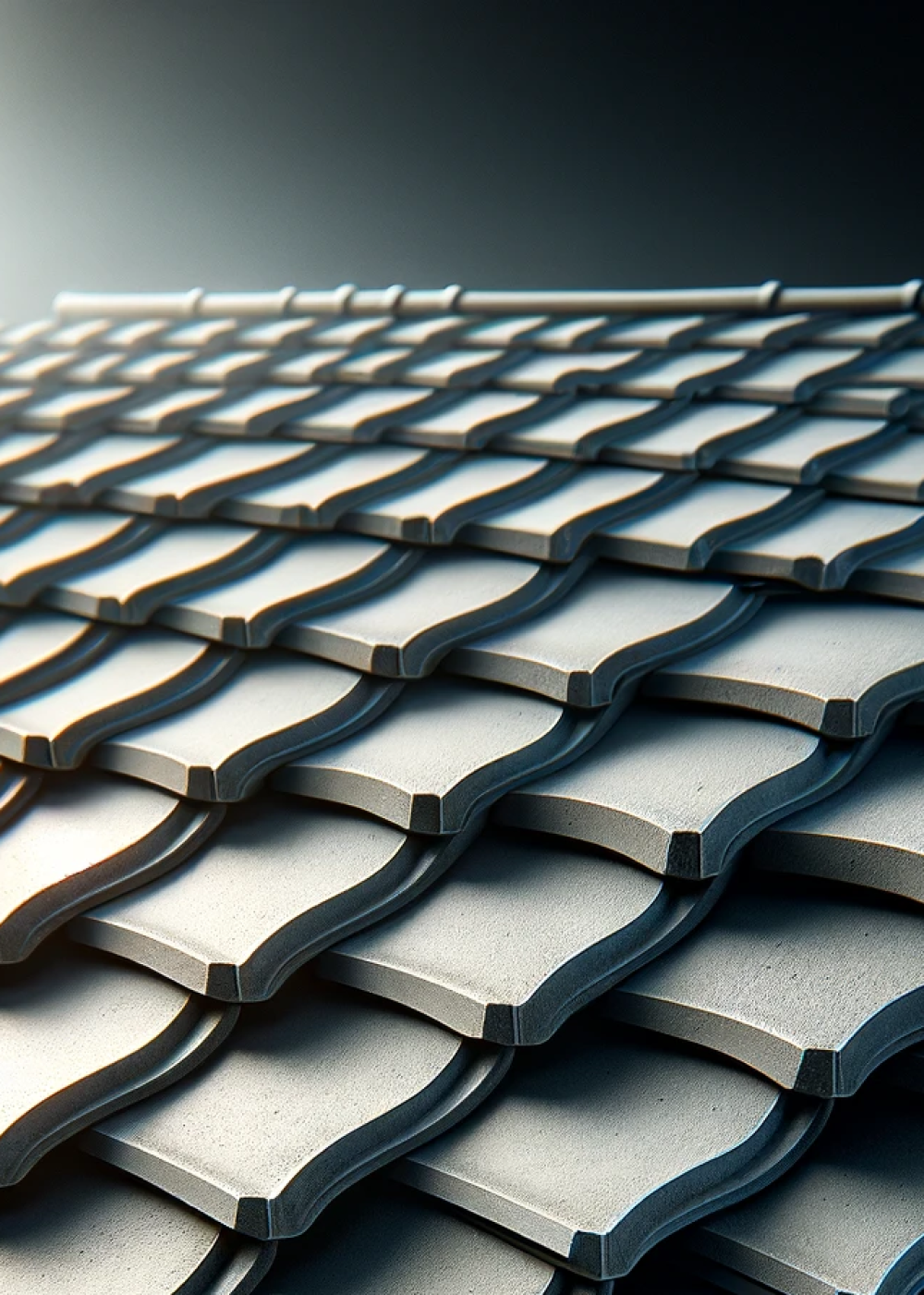

Green
A rooftop garden, also known as a green roof, refers to a layer of vegetation grown on top of a building’s roof. These green roofs provide a range of benefits, including shading, reducing heat buildup in the surrounding air and roof surface. They are particularly useful in urban areas where vegetation is limited, as they can help reduce the heat island effect, especially during the day. Green roofs can lower temperatures by 30ñ40°F compared to traditional roofs, and can even decrease city-wide ambient temperatures by up to 5°F. They can be installed on a wide
range of buildings, from industrial facilities to private residences, and serve as an additional layer to the existing roof structure for growing plants.
Metal
Investing in a new metal roof can be a smart decision for homeowners. Not only can it improve the curb appeal of your home and increase its resale value, but it can also save you money in the long run. Depending on the type of metal roofing you choose and your location, you could see a return on investment of 60% to 85%. One major benefit of metal roofing is its durability and resistance to severe weather events, such as hail, high winds, and heavy storms. Additionally, metal is a great option for those living in areas prone to wildfires, as it resists fire and smoke damage extremely well. Metal roofs typically have a lifespan of 30 to 50 years, which is significantly longer than traditional asphalt shingles, which typically last between 15 and 30 years.
Furthermore, metal roofs can reduce energy consumption and provide cost savings, making them an even more attractive option for homeowners. While metal roofs can become dented, it typically takes a lot of pressure to do so, whereas asphalt shingles can be damaged much more easily. Overall, a metal roof can provide a worthwhile investment for homeowners looking for a long-lasting and reliable roofing option.
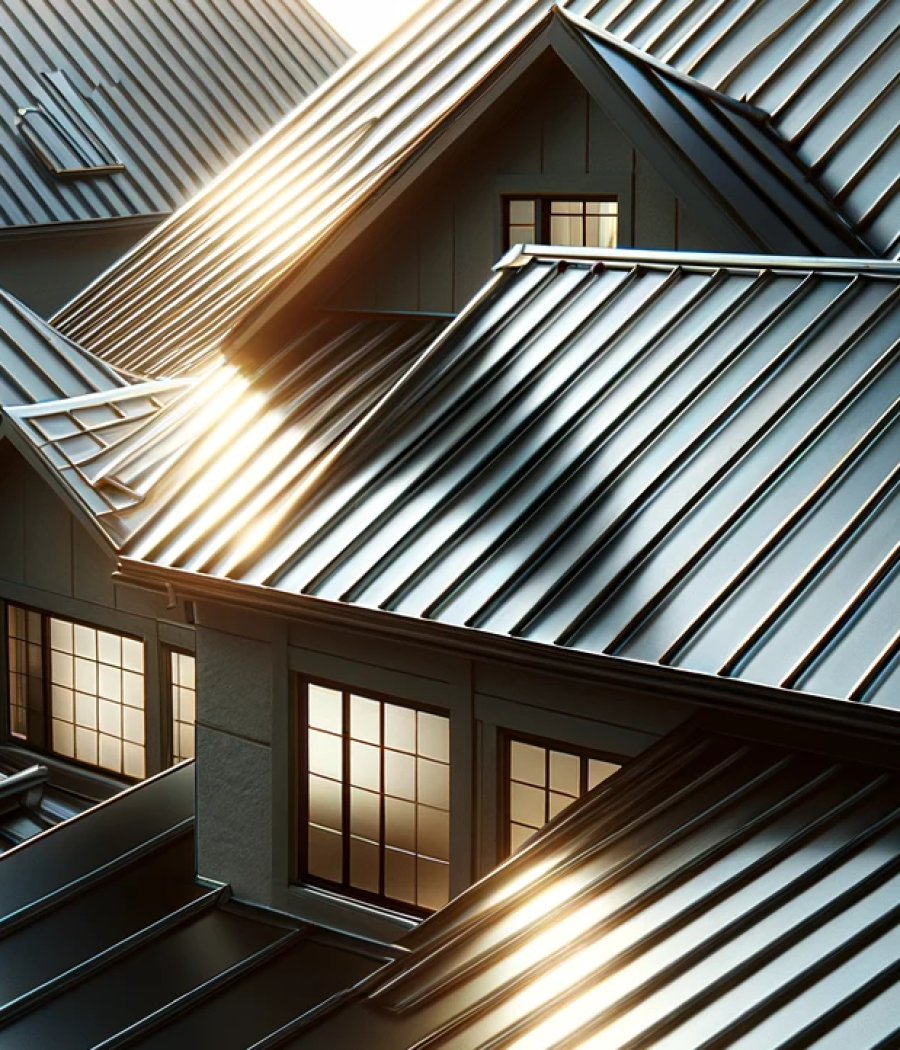
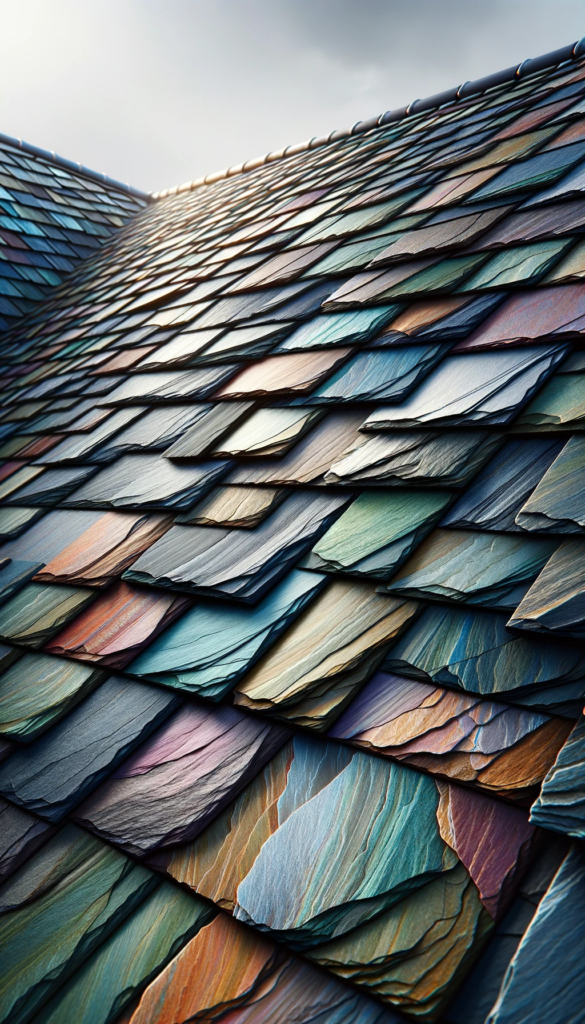
Slate
Slate roofing is a type of roofing material that has been used for centuries due to its durability and longevity. Slate is a natural stone that is mined from quarries, and it is cut into thin, flat pieces that can be used as roofing tiles.
One of the biggest advantages of slate roofing is its durability. A slate roof can last for 100 years or more, making it one of the longest-lasting roofing materials available. Additionally, slate is fire-resistant, which can be important in areas prone to wildfires. Another advantage of slate roofing is its aesthetic appeal. Slate tiles come in a variety of colors and textures, which can give a home a unique and beautiful appearance. Additionally, slate tiles have a natural look that can complement a variety of architectural styles.
However, there are also some disadvantages to slate roofing. One of the biggestdrawbacks is its cost. Slate roofing can be very expensive to install, which can make it prohibitive for some homeowners. Additionally, slate is a heavy material, which
can require additional structural support in order to be installed properly. Another disadvantage of slate roofing is its fragility. While slate is a durable material, it can be brittle and can crack or break if walked on or hit by falling objects. This can make it difficult to repair or replace damaged tiles.
In summary, slate roofing is a durable and beautiful roofing material that can last for decades. However, its high cost and fragility may make it less practical for some homeowners.
Wood
Wood shingles, also known as wood shakes, are made from split logs or blocks of wood. They are a traditional roofing material that has been used for centuries and is known for its natural beauty and rustic charm.
One of the primary benefits of wood shingle roofing is its aesthetic appeal. Wood shingles have a natural, organic look that complements many different architectural styles. They are available in a range of colors, from light tan to deep brown, and can be stained or painted to achieve a specific look. They are also a renewable resource, making them an environmentally friendly option.
However, wood shingle roofing also has some drawbacks to consider. One of the primary concerns is its susceptibility to fire. Wood shingles are highly flammable and may not be suitable for use in areas with a high risk of wildfires. Additionally, they can be prone to rot and insect damage if not
properly maintained. Another concern with wood shingle roofing is its cost. Wood shingles are generally more expensive than other types of roofing materials, such as asphalt or concrete, and may require more frequent maintenance, such as cleaning and re-staining. Overall, wood shingle roofing is a beautiful and durable option for homeowners who are looking for a natural and organic look. While it may not be the most cost-effective or fire-resistant option, its aesthetic appeal and energy efficiency can make it a good investment for those who value sustainability and traditional craftsmanship.
